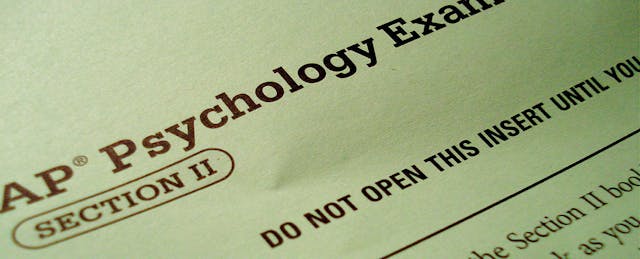Last year, the College Board piloted a new Advanced Placement course in computer science: AP Computer Science Principles, a program that the organization hoped would engage more females and students of color in computer science.
Today, the nonprofit is releasing data from the pilot, in addition to other results from a slew of other AP courses that more than 2.6 million students completed in the 2015-2016 school year.
The Good: Large Launches and Closing Participation Gaps
According to David Coleman, CEO of the College Board, 1.1 million students enrolled in at least one AP course this year. The adoption of the AP Computer Science Principles course in 2,500 schools marks “the largest launch in College Board history,” Coleman says.
In terms of who’s taking computer science classes, Coleman says his team is making headway in closing some gaps. In 2013, no females took the exam in Mississippi, Montana, and Wyoming, and 11 states had no black students engage in the exam. Two years later, there were still 10 states without a single black AP Computer Science student. But now, the AP CS Principles course is changing that, Coleman reports.
“While in our AP Computer Science A course, black students’ participation is only 4 percent of total students, [they make up] 16.2 percent in this Principles course. It’s about time,” he says. For Latino and Hispanic students, the comparison is 9 percent for Computer Science A versus 18 percent for Principles.
The new course “is convincing a lot of my kids to pursue computer science degrees,” according to Art Lopez, an Advanced Placement teacher at Sweetwater High School in National City, Calif. “I have a young student, Carla Gonzalez. Her dream is to work for Pixar, and now she’s challenging herself to go and get started [in computer science] at community college.”
Speaking of female students, they made up 28 percent of students in the AP Computer Science Principles pilot, compared to 22 percent in AP Computer Science A.
The Problematic: Inconsistent Performance
While the College Board has managed to increase the percentage of female students and students of color engaging in Advanced Placement computer science courses, other stats from the 2015-2016 AP Program Participation and Performance Data report clearly reveal areas for further improvement.
Similar to years past, several states lacked test takers in certain demographics. Wyoming, for example, did not have a single Asian-American or black student take Computer Science A. No black students in West Virginia took AP Macro or Microeconomics.
Across all AP exams, there was a marked variation in the percentage of high schools students who scored a 3 or higher on an AP exam. (That’s typically considered the passing grade.) In Massachusetts, 31 percent of test takers made the mark, although in 16 states and the District of Columbia fewer than 15 percent did. In Louisiana, only 8 percent of high schools students scored a 3 or higher on an AP exam. In Mississippi, that percentage drops to 6 percent.
When EdSurge asked the College Board about plans to address these discrepancies and variation between states, Senior Vice President of Advanced Placement and College Readiness, Trevor Packer responded that it’s mostly a human capital issue, as the higher-performing states often “have strong education leaders responsible for expanding different opportunities.”
The Plan Moving Forward: Dealing With Funding Changes
While the College Board is aware of the gaps in testing and scores among states, a more immediate issue on the horizon must be addressed, Coleman reports.
According to the Every Student Succeeds Act (ESSA), the Advanced Placement Test Fee (APTF) program will be eliminated going forward in 2017. Because the APTF traditionally awards grants to eligible state educational agencies (SEAs) so that they may “pay all or a portion of advanced placement test fees on behalf of eligible low-income students who (1) are enrolled in an advanced placement course and (2) plan to take an advanced placement test,” Coleman wonders how low-income students and their associated schools will be able to afford the AP program.
Coleman and Packer have discussed how to address the issue, and say that the answer may come in the form of a “a block grant.” But while workarounds are possible, it will take “careful’ planning on behalf of both the College Board and state governments.
“It’s a shame. Before, [students] didn’t have a [financial] barrier to taking the AP exam,” Coleman says. “I see a great setback with these federal funding issues. We’ve gotta be much more careful.”


